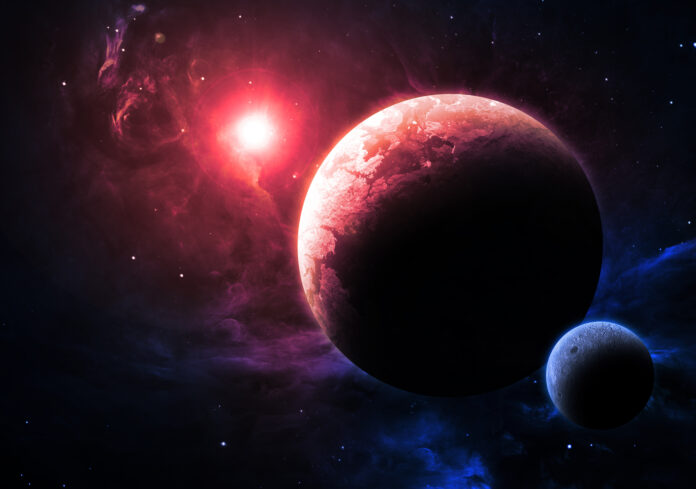Purple is the new green, as far as aliens are concerned, anyway.
If you were asked to imagine an alien planet, it would be reasonable to imagine a green earth-like rock orbiting somewhere in a distant solar system. But according to new research from Cornell University, we might be getting this color palette all wrong.
On earth, plants get their green color from chlorophyll pigments in their leaves. Chlorophyll absorbs light to power the process of photosynthesis, which is how plants make their own food. But chlorophyll only absorbs light at the red and blue ends of the color spectrum, meaning green light gets reflected from the leaves and makes them appear green.
But what if the major photosynthesizing life forms on other planets used a different form of energy?
Aphelleon/Getty
On Earth there are many species of bacteria that are able to absorb energy in the form of invisible infrared radiation. Many of these bacteria contain purple pigments to help them absorb this energy, which reflect blue and red light to create a purple hue.
“Purple bacteria can thrive under a wide range of conditions, making it one of the primary contenders for life that could dominate a variety of worlds,” Lígia Fonseca Coelho, a postdoctoral associate at Cornell University’s Carl Sagan Institute and first author of the study, said in a statement.
“They already thrive here in certain niches. Just imagine if they were not competing with green plants, algae and bacteria: a red sun could give them the most favorable conditions for photosynthesis.”
But why is it important to know what colors extraterrestrial life might be, beyond being able to more accurately depict aliens in Hollywood?
“We need to create a database for signs of life to make sure our telescopes don’t miss life if it happens not to look exactly like what we encounter around us every day,” Coelho said.
In their study, published in the journal Monthly Notices of the Royal Astronomical Society, Coelho and colleagues created models of numerous Earth-like planets with varying conditions and cloud cover. They then simulated how different types of purple bacteria might survive on these planets, and what color signatures they would produce under each set of conditions.
“Purple bacteria can survive and thrive under such a variety of conditions that it is easy to imagine that on many different worlds, purple may just be the new green,” co-author Lisa Kaltenegger, director of the Carl Sagan Institute and associate professor of astronomy at Cornell University, said in a statement. “We are just opening our eyes to these fascinating worlds around us.”
Do you have a tip on a science story that Newsweek should be covering? Do you have a question about aliens? Let us know via [email protected].
Uncommon Knowledge
Newsweek is committed to challenging conventional wisdom and finding connections in the search for common ground.
Newsweek is committed to challenging conventional wisdom and finding connections in the search for common ground.


